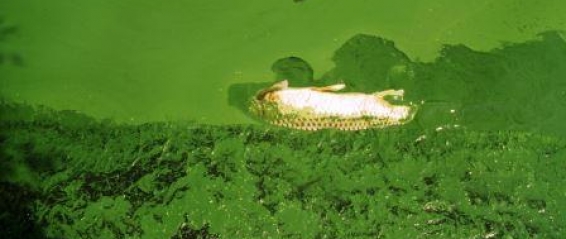Nutrient Overloading
Excess weeds and algal blooms are symptoms of a much deeper problem – Nutrient Overloading
Lakes Deteriorate in Stages. Phosphates, nitrates, and other pollutants enter the lake from the watershed and essentially “fertilize the lake.” This is called external nutrient overloading. The fertilizers we use to grow green crops and lawns are the same fertilizers that grow weeds and algae.
As these fertilizers/nutrients enter the lake there’s an explosion of weed growth and algal blooms. As weeds and algae die, they sink to the bottom of the lake and begin to decay. As they decay, their decomposition depletes oxygen. Beneficial aerobic bacteria and other microorganisms that depend on oxygen to decompose/digest the phosphorous and nitrogen in the decaying organic matter die.
As aerobic bacteria and ‘muck-eating’ microorganisms die, anaerobic bacteria take over and the bottom of the lake becomes layered in dead organic muck. This muck then begins to re-fertilize the lake. This is called internal nutrient overloading. Muck releases phosphorous and nitrogen back into the water column, and continuously fuels further weed and harmful (toxic) algae growth. The lake is fertilizing itself.
Once begun, it’s a vicious cycle that kills lake ecosystems. Water quality diminishes. Excess weeds make boat navigation impossible. Property values decrease. Toxic blue-green algae close beaches and threaten human health. Fish kills happen.
























